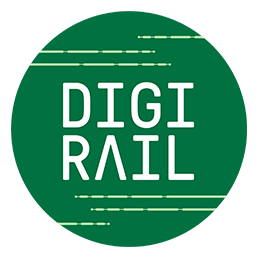In the construction planning of the EKA track section, the planning areas are divided into three different entities; Kokemäki-Rauma, Kokemäki-Mäntyluoto and Mäntyluoto-Tahkoluoto as well as Lielahti-Kokemäki. The project is unique, as a lot is being done for the very first time. An example of this is the connection of level crossings to ETCS.
The construction planning for Digirail’s first commercial track section (EKA) is currently underway and the goal is to have it completed by the end of August 2024. Construction planning was started at the turn of December-January.
“Construction planning has had a good start and is progressing on schedule. All planning assignments are busy at work, so the speed of guidance for the planning operations has at times been quite dizzying. We have a wide range of top experts working on this project, so I have been able to learn something new at every planning meeting,” says Johanna Kuismin, Project Manager for EKA construction planning.
The overall length of the EKA track section is approximately 190 kilometres; it is a single track with 18 railway operating locations. Six of them have passenger traffic, but the rest mainly serve as technical railway operating locations for maintenance. The planning area as such starts from the west side of the Nokia railway operating location, where the is a level transition area between Siuro and Suoniemi. In the level transition area, train control changes from JKV to ETCS and vice versa.
In the construction planning of the EKA track section, the planning areas are divided into three different entities and planning groups. The first of these is Kokemäki-Rauma (approximately 47 kilometres), which also involves simulation for the entire EKA track. The second is Kokemäki-Mäntyluoto (approximately 57 kilometres) and Mäntyluoto-Tahkoluoto (approximately 11 kilometres). And the third entity is Lielahti-Kokemäki (approximately 90 kilometres).
Simulation is a programmatic way to emulate the reality of the traffic operation on the EKA track section. Simulation has been used for the purpose of confirming the accuracy of the solutions and principles made during preliminary design in 2022. Simulation results are utilised in guiding the design of signalling devices.
“We have examined, among other things, the suitability of the different placement options of marker boards, assessed the block intervals of the railway operating locations and the use of virtual sub-sections in such a way that EKA would have the best and most efficient transport capacity available,” says Pasi Kråknäs, who leads the team guiding the construction design of signalling devices in EKA.
Design guidelines developed in Digirail are put to use
Construction planning is a very unique project and a lot of things are now being done for the first time. An example of this is the way in which the level crossings will be connected with ETCS in each of the cases. A solution has been sought for this for each level crossing specifically. Similarly, there have been discussions regarding the alarm sections. The EKA construction planning is also the first phase where we will be using the design guidelines (RATO22) compiled in Digirail.
“When guidelines are put into practice, there are always questions as well as needs for more details and interpretations. This is why it was natural that the team that previously produced the RATO22 guidelines has now been closely involved in the guiding of the construction planning for EKA. At the same time, we are gathering valuable information to further develop the guidelines,” says Kuismin.
“Construction planning has been progressing on schedule. We have faced many issues for which we have sometimes had to provide solutions on the fly. We are testing things recorded in the RATO22 guidelines to see how they function in the planning phase. In the beginning, there was some fear regarding where this will all go, with the three separate planning groups and all, but so far, everything has gone very well,” says Kråknäs.
The purpose is to gather all the lessons learnt in the EKA phase and then make improvements on the next track section which will be equipped according to the roll-out plan. The purpose of collecting insights from previous phases is to ensure continuous development and improvement.
“When the construction plans are finalised also for the last sub-assignment in August, we will be having an intensive phase to coordinate all our plans into one. After that, also the equipment suppliers will be utilising the plans, and when we start implementing the plans in the field in real-world conditions, we will finally be able to see some project results,” says Kuismin.
